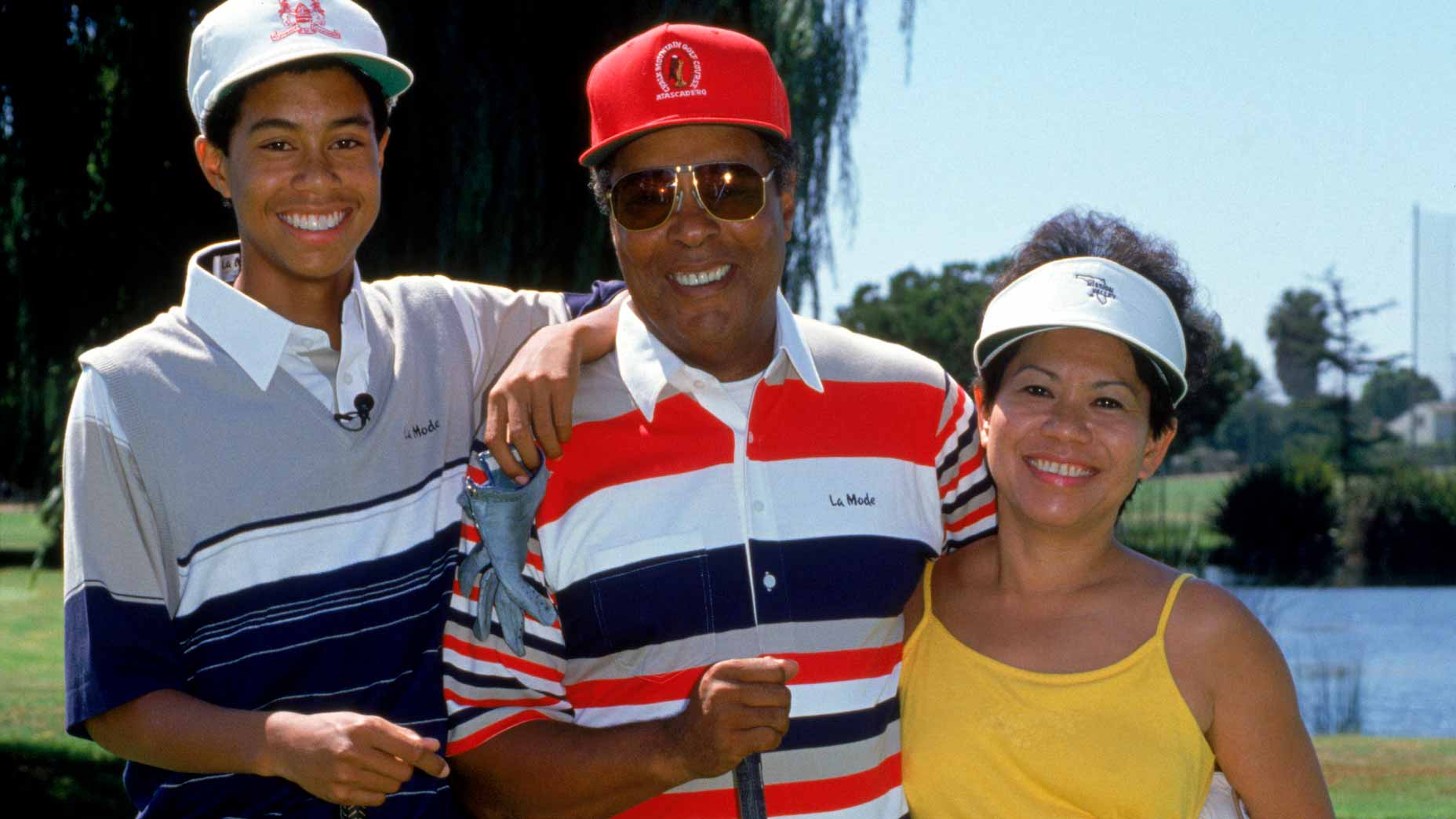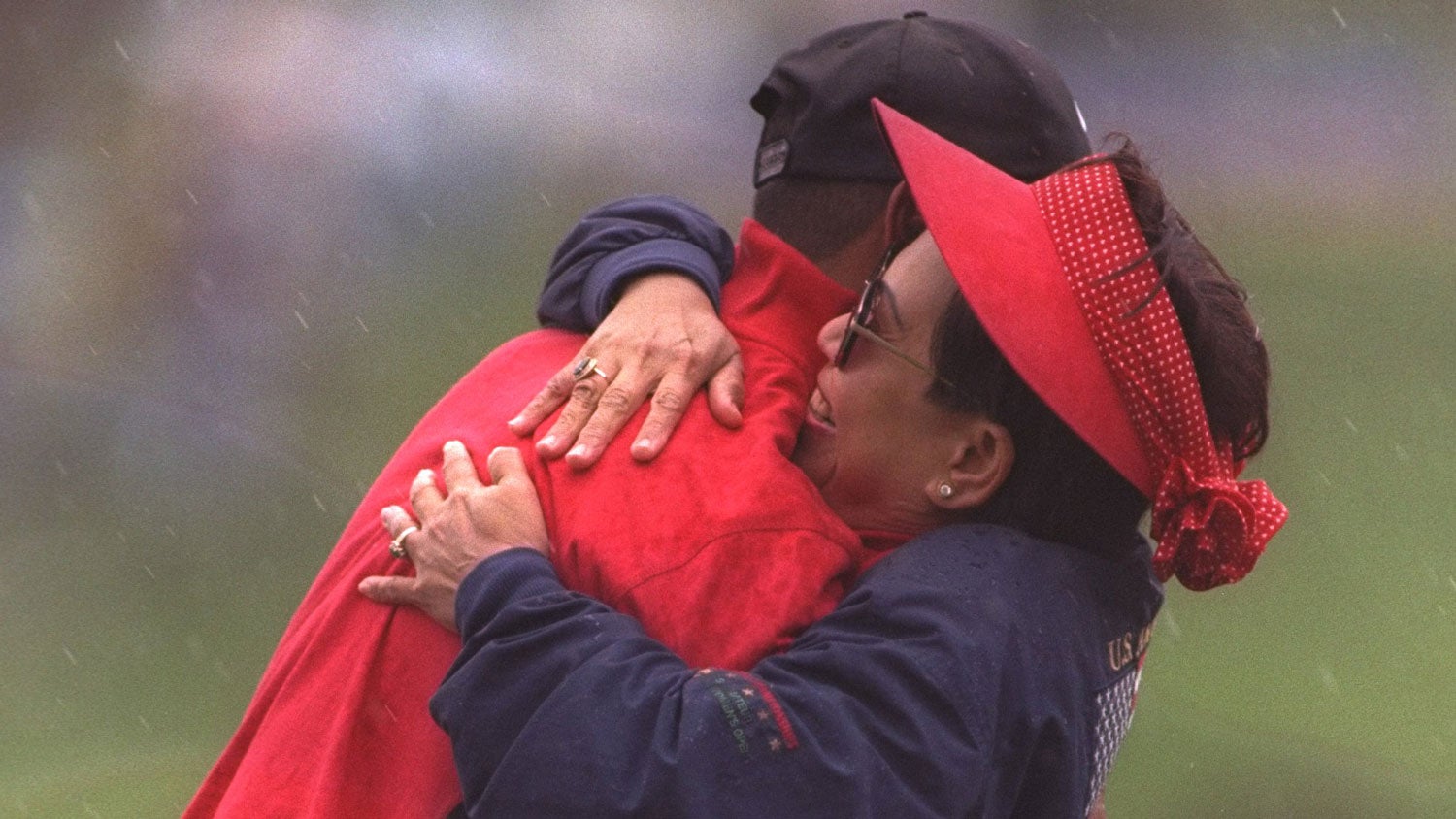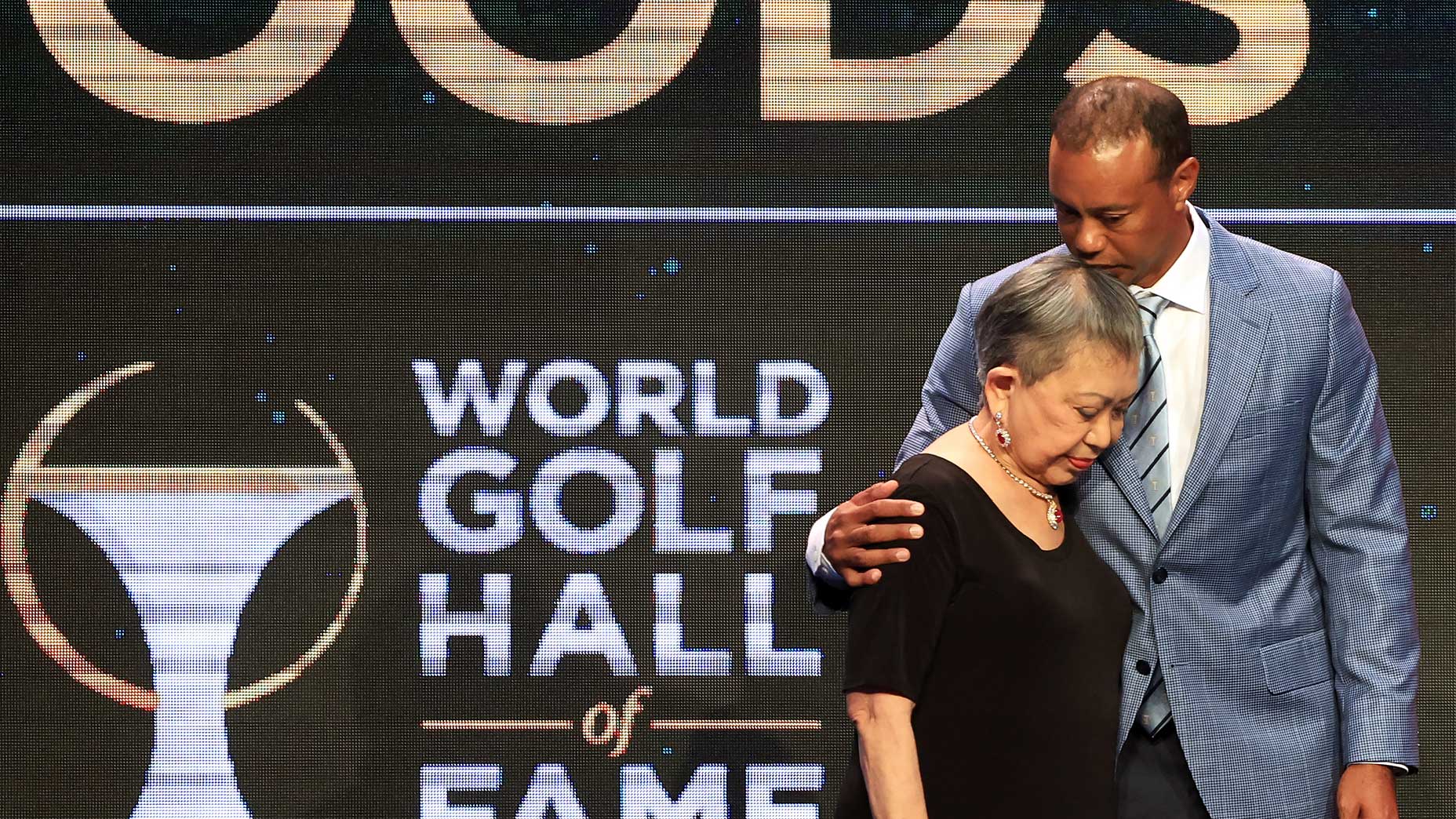For Tiger Woods and late mom, Tida, two memories tell a story
- Share on Facebook
- Share on Twitter
- Share by Email

Tiger Woods with his father Earl and his mother Kultida in 1990.
Getty Images
IN THE MOMENTS AFTER TIGER WOODS WON THE 2019 MASTERS, the first person who greeted him behind the 18th green was his son Charlie. He was 10 years old at the time and ran down into his father’s outstretched arms, their embrace echoing another Augusta National hug between father and son, when Tiger’s father Earl had given him an iconic bear-hug behind the same green at the conclusion of the 1997 Masters. That was two decades before. More than a dozen majors before. Several lifetimes before.
But the next hug? That belonged to his mother, Kultida, just as it had at his first Masters, the fierce, loving matriarch of their family, someone Tiger has long said “doesn’t get enough credit,” someone he described as a “force of nature all her own,” in announcing her death on Tuesday. She was there in her son’s return to glory, just as she had been at his first big win and as she had been before, between and since.
I wasn’t there in ’97 but I remember that scene in 2019, the greatest day in modern professional golf history, at the culmination of Tiger’s impossible comeback to the top of the game. That Saturday night, Tida had helped arrange for her grandchildren Charlie and Sam to fly up for the final round; they’d arrived Sunday morning and walked the front nine but retreated to the clubhouse for the back. (It’s tough to get a good view if you’re a 10-year-old kid, after all, or even if you’re Tiger Woods’ mom.) And so that’s where they held court, quiet in tense moments, screaming after birdies, Tida in particular eager to yell to her son on the screen.
As Woods’ ball landed safely on the 18th fairway, nursing a two-shot lead, his family made their way out of the clubhouse, past the big oak tree and down the hill to behind the 18th green. From there, they could see as he finished off a two-footer to seal the deal. Then came the round of hugs, one after the next.
“She kept saying she’s so proud of me,” Tiger remembered later. “That my dad would be so proud if he was here.” He added that, for all that had happened in between his first and last Masters wins, she’d been the constant.
Tiger Woods’ mother gave him more tools than you might realizeBy: Michael Bamberger
“It’s amazing,” he said. “It’s 22 years. Life goes on. There’s one continuity: My mom was there. I said, ‘We did it. I love you so much, Mom.’”
The moment sparked decades of gratitude and recall for Tida’s son, thinking about their days in the Plymouth Duster, unfolding the road map to get them to a 7 a.m. peewee tournament tee time.
“She’s always there. She’s always present in every round I play,” he said.
IN 2022, WHEN TIGER WAS INDUCTED into the Hall of Fame at PGA Tour headquarters in Ponte Vedra Beach, Fla., he gave a 15-minute speech in which he barely mentioned his professional career at all. He leaned on his early days instead, all the way back to the beginning, back to when he was six years old and Tida would take him to play a par-3 course, Heartwell Golf Park in Long Beach, Calif., where he’d developed his game and learned to beat up on much older competition. She pled with the pro to let him practice there for free. Tiger took it from there.
He recalled his mom as his first backer, albeit unknowingly; at age 8 she’d drop him off at the course with 75 cents — 25 for a hot dog, 25 to use the pay phone to call her and another 25 for backup.
“Well, that backup then turned into putting contests, which I ended up pocketing a few more quarters,” Tiger said.
He cited her as his first co-conspirator, too; when he began to outgrow Heartwell she’d drop him off at the entryway to the Navy golf course nearby, where he’d sneak onto the course, search for lost golf balls and eventually meet up with his dad to play as many holes as they could in the dark.
As Tiger talked through his childhood that evening in Ponte Vedra he choked up, thinking about how his parents had given him everything they had.
“My family made a tough decision, and at the age of 14 and a half we took out a second mortgage so I could go out and play the AJGA Tour,” Tiger remembered. “Mom stayed at home. Dad traveled. And I went out and played the AJGA Tour on our second mortgage.
“So without the sacrifices of Mom, who took me to all those junior golf tournaments, and Dad, who’s not here, but who instilled in me this work ethic to fight for what I believe in, chase after my dreams, nothing’s ever going to be given to you, everything’s going to be earned. If you don’t go out there and put in the work, you don’t go out and put in the effort, one, you’re not going to get the results, but two, and more importantly, you don’t deserve it. You need to earn it.”
That mentality defined Woods’ pursuit of greatness even as a teenager. And when, coming out of Stanford, Nike and Titleist made him wealthy overnight.
“The first thing I was able to do is I was able to pay off that mortgage,” he said.
THERE ARE LAYERS to the Tiger-Tida relationship, stories that will emerge in the coming days and weeks and years. From her role as “the enforcer” to the inspiration behind wearing red, his “power color,” in Sunday final rounds to the way she’d get him a new tiger headcover every year and sew “Rak Jak Mea” — Thai for “Love from Mom” — inside each one.
She was even there at Woods’ latest competitive venture, the TGL, where just last week he saw her in the stands and flashed a grin and a wave in her direction.
“Hi Mom,” he yelled.
It was the latest example of Tida showing up. There’s that line again, the one Woods dropped after the 2019 Masters.
“She’s always there. She’s always present in every round I play.”
Fitting that he used the present tense. May it remain true long after her passing.
Dylan Dethier welcomes your comments at dylan_dethier@golf.com.
Latest In News
Tida Woods, mother to Tiger, dies at 81

Dylan Dethier
Golf.com Editor
Dylan Dethier is a senior writer for GOLF Magazine/GOLF.com. The Williamstown, Mass. native joined GOLF in 2017 after two years scuffling on the mini-tours. Dethier is a graduate of Williams College, where he majored in English, and he’s the author of 18 in America, which details the year he spent as an 18-year-old living from his car and playing a round of golf in every state.










